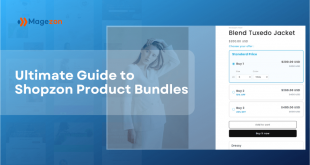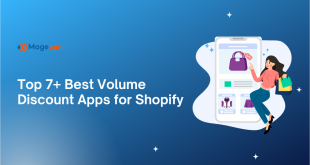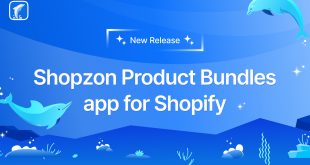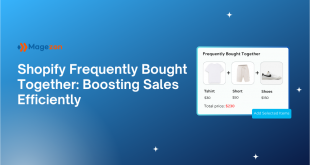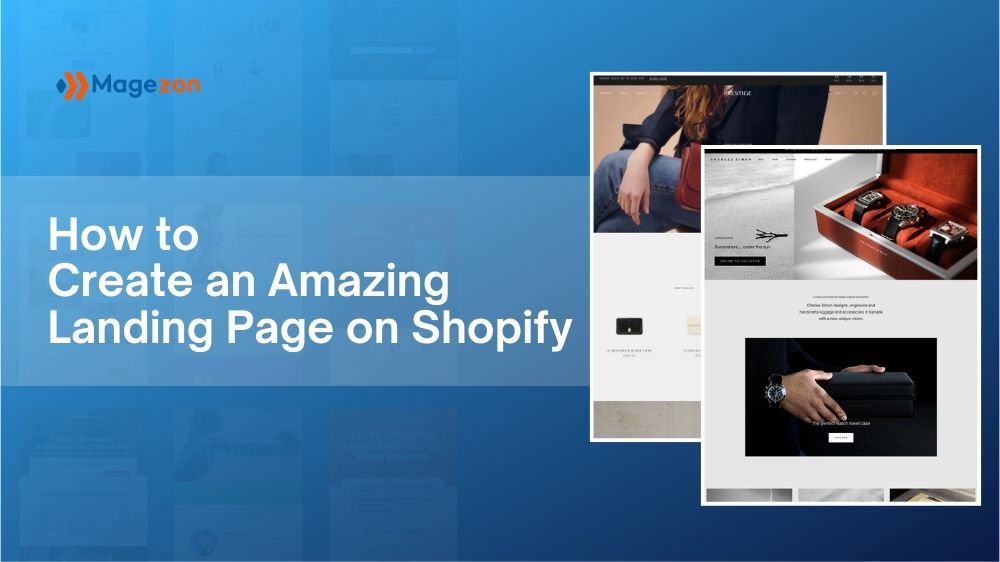
In the vast ocean of e-commerce, where attention spans are fleeting and competition is fierce, a well-crafted landing page can make all the difference and enhance conversion. A landing page serves as a gateway to your online store, entices visitors to explore your products and services, and ultimately converts them into loyal customers.
But how exactly can you create an amazing Shopify landing page that captures attention and drives sales? Let’s delve into the strategies in this article!
Table of contents
Shopify Landing Page Introduction
1. What is a Shopify Landing Page?
A landing page is a stand-alone webpage designed to fulfill specific objectives, such as driving sales, generating leads, or promoting limited-time offers.
Unlike homepages, which serve multiple purposes like brand or product introductions, landing pages are tailored for distinct audiences and often accompany marketing campaigns or paid traffic. Both landing pages and homepages aim to create a positive first impression, but they differ in their focus and goals. While a landing page primarily aims to boost conversion rates, a homepage serves broader objectives beyond immediate conversions.

Image source: Homechef.com
2. Why Do You Need to Use a Landing Page on Shopify?
The most compelling reason for using Shopify landing pages is increasing conversion rates. It helps convert visitors into customers by providing a more relevant experience for them.
In addition, landing pages also provide other important benefits listed below:
- Shopify merchants can craft landing pages that cater to specific audience segments.
- Landing pages optimize the effectiveness of paid campaigns, resulting in higher returns.
- Conducting A/B tests on landing pages aids in identifying strategies that drive superior conversion rates.
- Through landing pages, sellers gain valuable insights into the interests and behaviors of their target audience.
3. Types of Shopify Landing Page
Each Shopify landing page design is used to serve different goals. Thus, the most important thing is determining your purpose when using the Shopify landing page. This will help you choose the suitable landing page type to increase revenue.
Lead generation landing pages
A lead generation landing page is designed to capture visitors’ information, such as email addresses, phone numbers, or demographic data. Its primary function is to persuade users to provide personal details in exchange for valuable incentives, such as coupons, ebooks, or exclusive access to your online store.

Image source: Shopify.com
Shopify collects visitors’ emails. In return, they offer users incentives like a 3-day free trial and pay 1 USD for the first 3 months. If you want to build your own online store, sign up for Shopify now to receive incentives.
Click-through landing pages
Click-through landing pages feature compelling call-to-action (CTA) buttons that motivate potential customers to take action, whether it’s making a purchase or signing up for a service on your online store. Additionally, these pages offer supplementary information about the product or offer, emphasizing the benefits to help visitors make informed decisions and ultimately increase conversions.
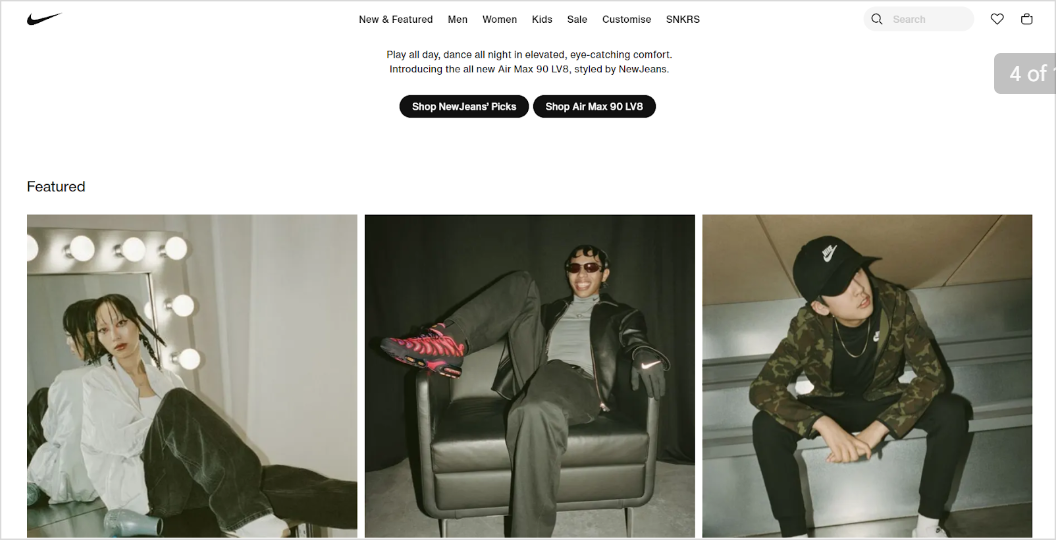
Image source: Nike.vn
Sale landing pages
A sales landing page is a standalone webpage meticulously crafted to boost revenue. Its core objective is to transform visitors into customers by compelling them to purchase your product or service.
Typically, these pages provide comprehensive details about the product or service, highlighting its advantages and how it addresses customers’ needs.
Additionally, sales landing pages feature compelling call-to-action buttons, enticing coupons, and discounts to further persuade customers and prospects to complete a purchase. Depending on the intended purpose, a sales page may vary in length, offering concise or in-depth information to effectively drive conversions.
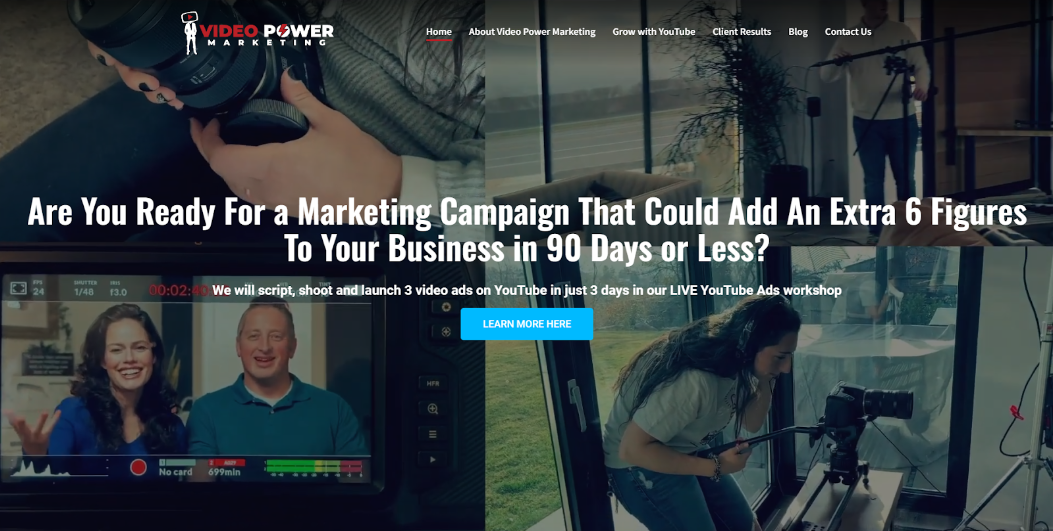
Image source: Videopower.com
Splash landing pages
A splash page functions as a precursor to the main pages of your website, catering to various needs depending on your business’s industry or niche. It may serve purposes such as promoting a new offer, displaying a disclaimer, or prompting visitors to verify information.
Unlike lead generation landing pages, splash pages typically do not request visitors to provide personal information such as their name or email address. Instead, their primary function is to provide relevant information to visitors, such as announcing a new company update or personalizing their experience by confirming their geographical region.
A typical splash page includes minimal text, a background image, and most importantly, a prominent link that directs visitors to the main website. You can view an example below:
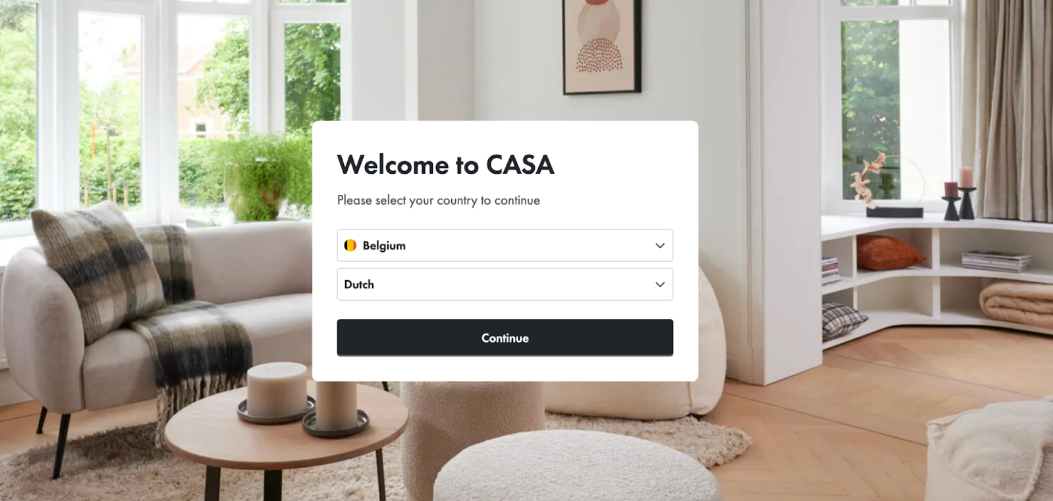
Image source: Casashops.com
Product landing pages
To be clear, a product landing page differs from a standard product page on an e-commerce website. A product landing page is specifically designed to promote and sell one particular product exclusively, without distractions.
Typically, it lacks main navigation menus and features only one call-to-action (CTA) button. Moreover, all content on the page focuses solely on the highlighted product, emphasizing its features, benefits, and value proposition to entice potential customers to make a purchase.
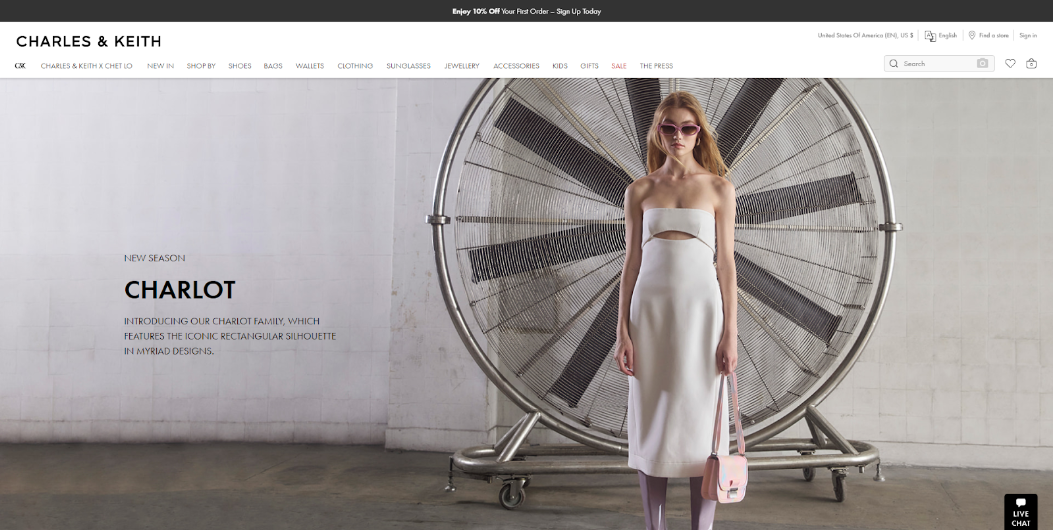
Image source: Charleskeith.com
Subscription landing pages
Distinct from other types of landing pages, a subscription landing page revolves solely around recurring products or services. These pages are not only used to generate leads, but they’re also a valuable tool for setting customer expectations.
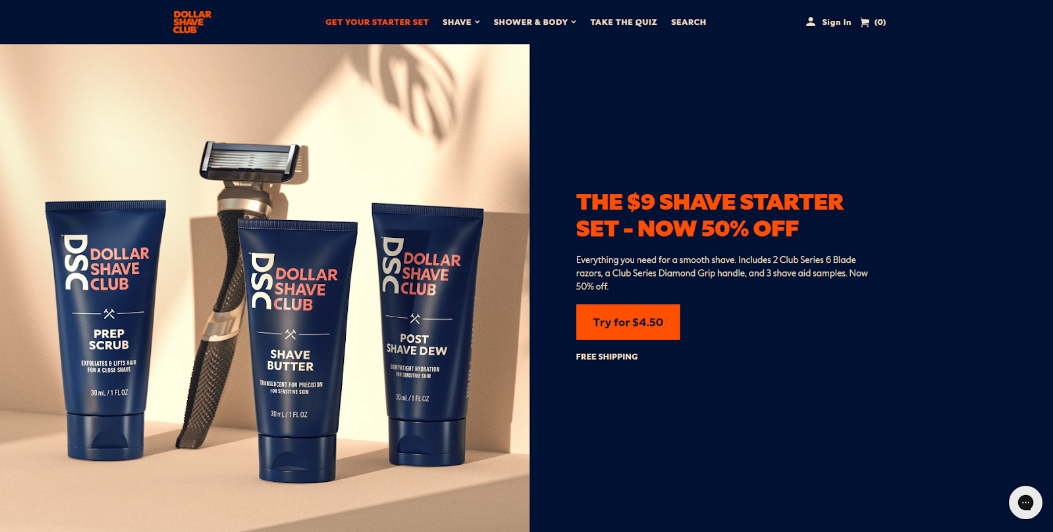
Image source: us.dollarshaveclub.com
Seasonal landing pages
As the name suggests – the seasonal landing page is designed especially for the holiday season such as Christmas, Valentine’s Day, Halloween, etc. While the landing page’s theme will change following the season, its primary objective never changes.
It helps you drive more conversions and steadily increase customer trust and loyalty. Moreover, it enhances SEO visibility by incorporating relevant seasonal keywords, thereby attracting more organic traffic to your website.
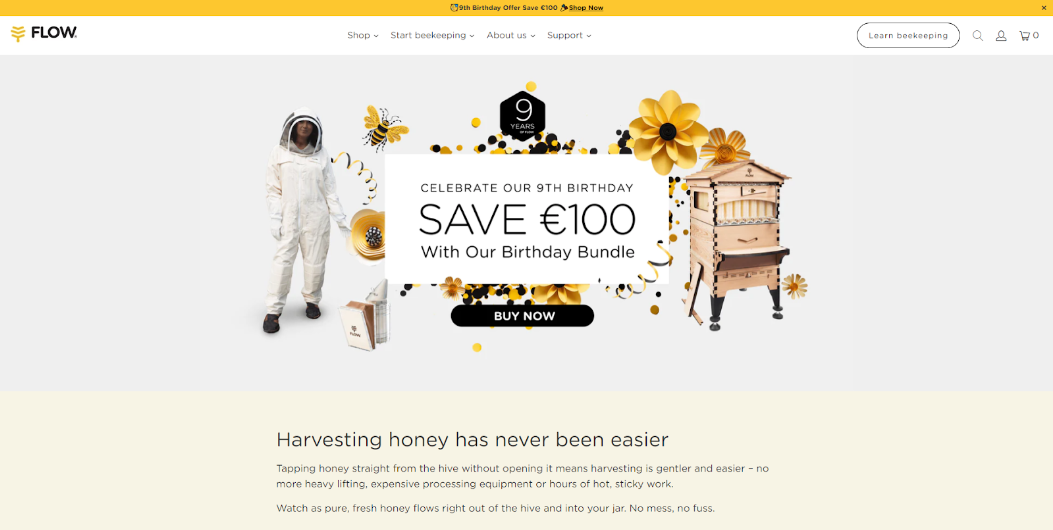
Image source: Eu.honeyflow.com
How to Create A Landing Page in Shopify
You can create a landing page on Shopify in two ways:
- Utilizing Shopify’s default pages, such as the product page, collection page, or even the coming soon page, to construct a landing page tailored to your needs.
- Employing Shopify Landing page builder apps, which enable you to design your page using intuitive drag-and-drop elements, providing flexibility and customization options.
1. Use Shopify Default Pages
There are many types of pages you can choose in the Shopify default theme editor such as the password page, about us page, product page, collection page, contact us page, etc. You just need to follow these steps to build your own landing page from scratch.
- Step 1: Create a landing page template
From the Shopify admin, select Online Store > Themes. Pick the theme you want to edit, then click the Customize button.
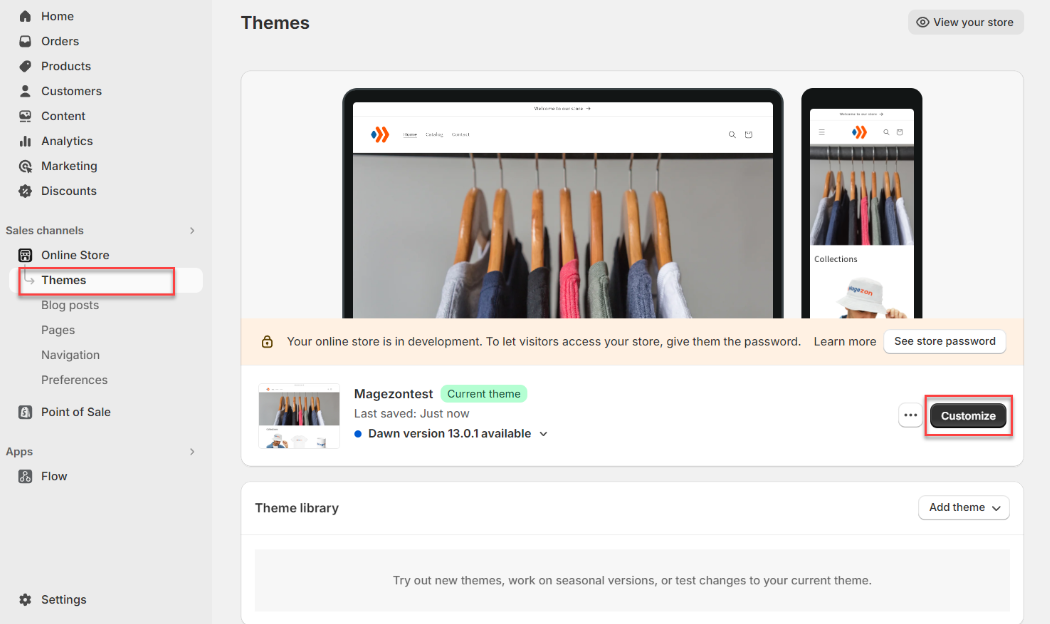
From the dropdown menu at the top of the page, select the type of landing page you want to customize. Click Other to see other kinds of landing pages.
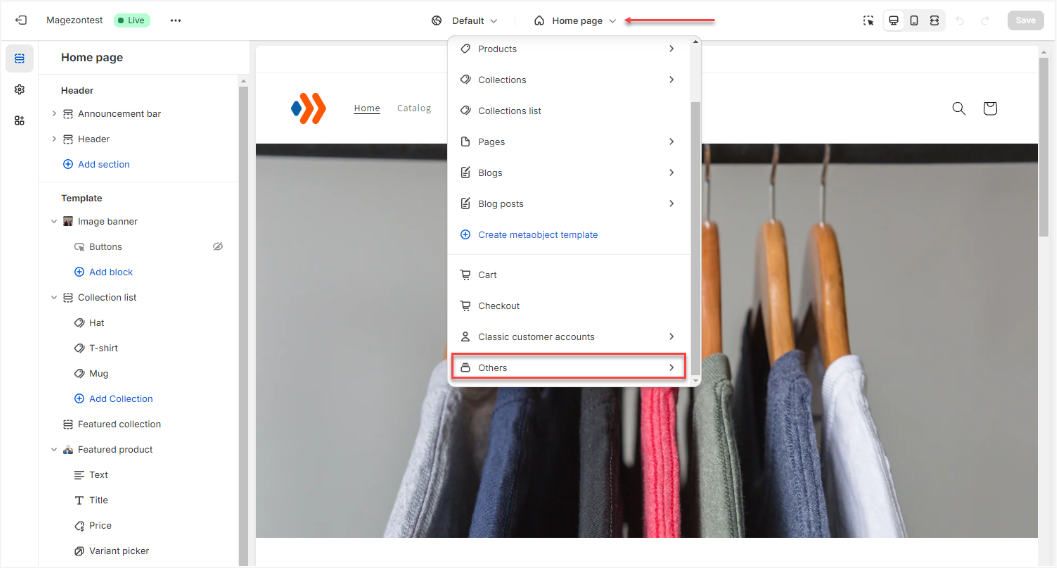
For instance, if you want to create a product landing page, click Products from the dropdown menu then choose Create template.
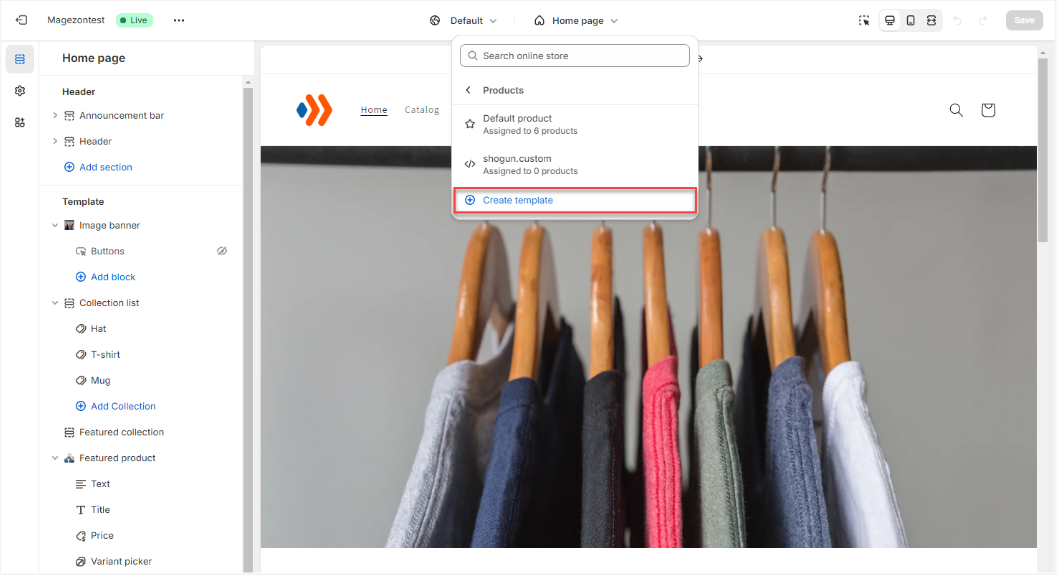
After that, a popup will appear. Fill in the page’s name, and click Create template.
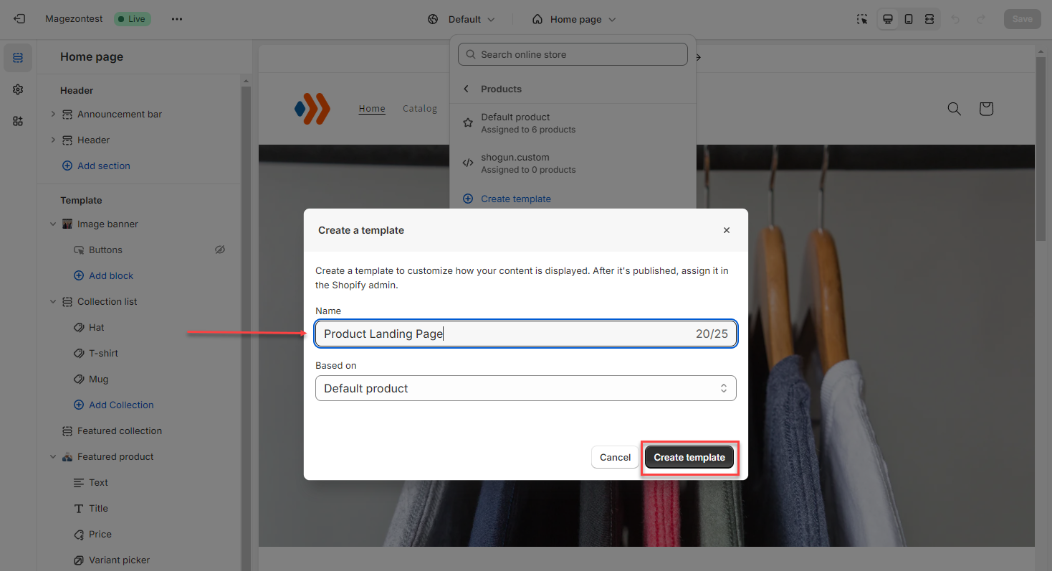
- Step 2: Customize the Shopify landing page
Using the menu on the left-hand side, choose the elements you want to show on your landing page and style them according to your preference.
You can adjust their position on your page as you like simply by dragging and dropping them to the desired places. Moreover, if you want to add more single parts to this landing page, press Add section.
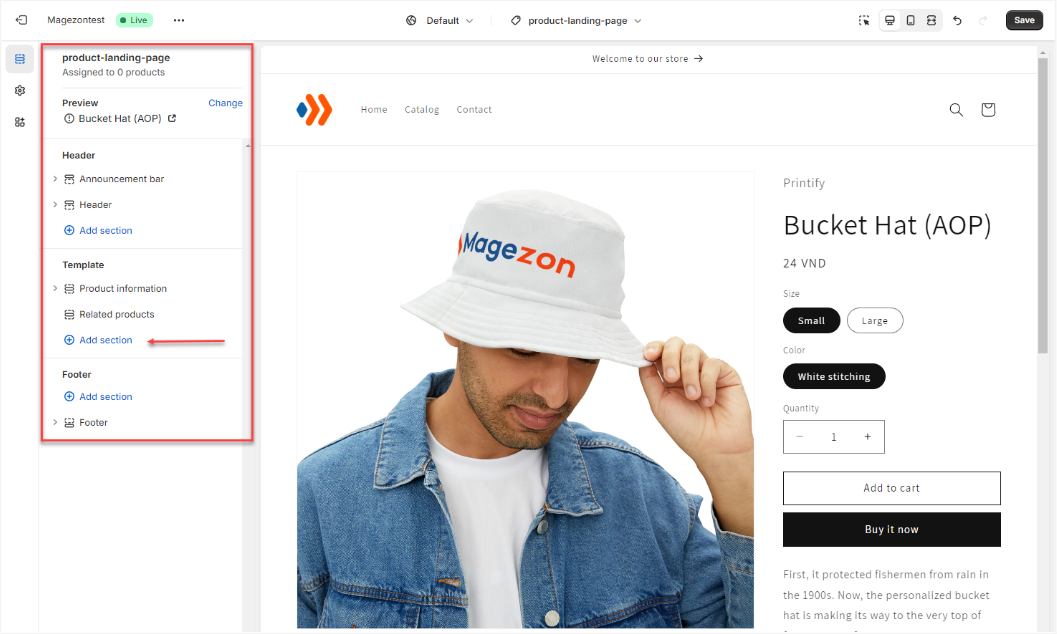
Next, click Save in the top right corner to save your changes.
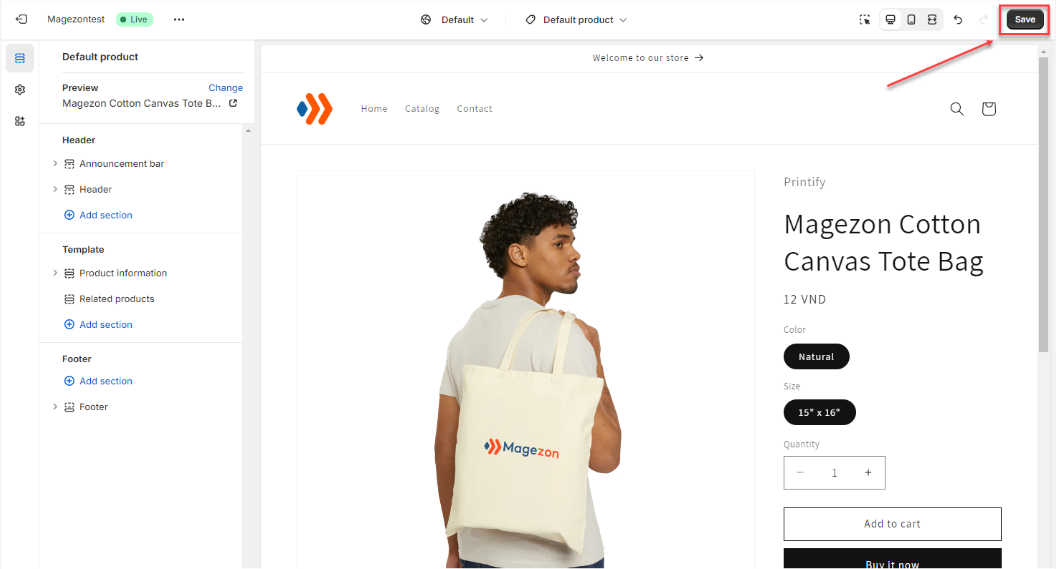
- Step 3: Create a new page
To create a new page on Shopify, from your Shopify dashboard, click on Pages > Add Page.
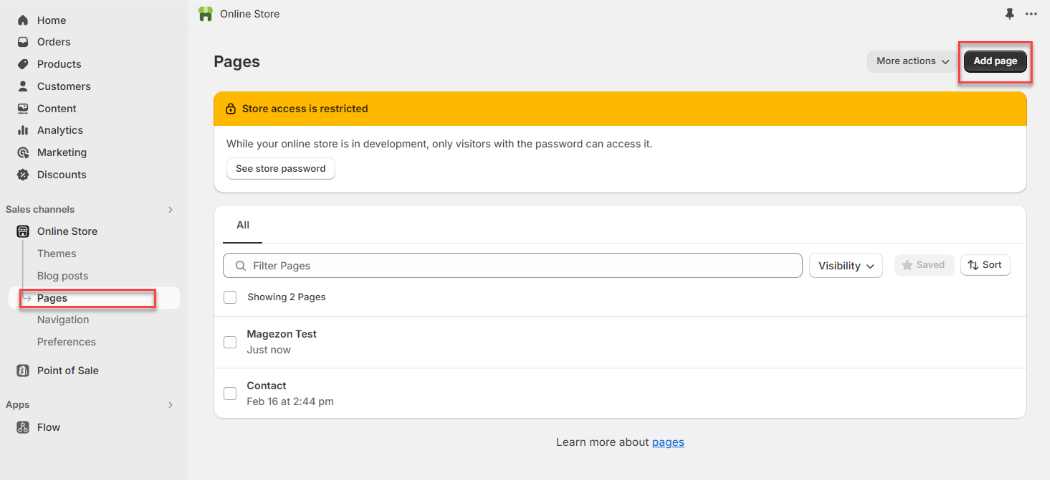
- Step 4: Building your landing page
Here, you can choose the landing page template and start building content including a page title, graphics, compelling writing, and your call to action. In addition, edit website SEO to make your landing page on Shopify more search-engine-friendly.
When you complete, remember to put on the Save button.
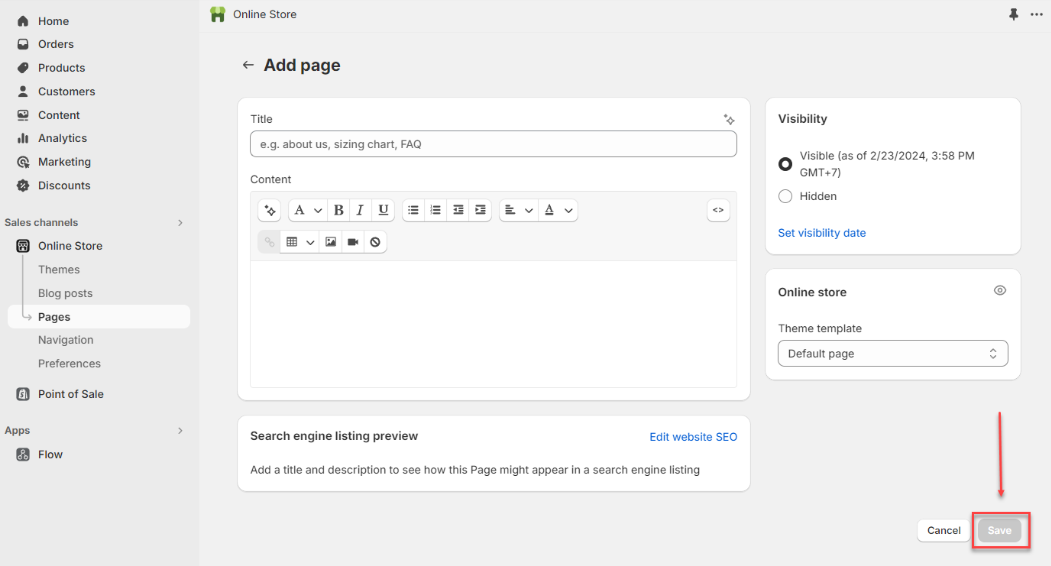
2. Use Shopify Landing Page Builder App
If Shopify’s default page builder doesn’t meet your needs for creating landing pages, you should look into third-party landing page creation apps. Just typing “landing page builder” in the search bar of the Shopify app store, will show a lot of results. If you don’t know which app is the best for you, read this article to select the most suitable one for your business.
Tips for Building A High-Converting Shopify Landing Page
1. Keep It Clean and Simple
A cluttered landing page with too many components or text might overwhelm visitors and dilute your message. Therefore, you should keep the design clean to help customers understand your content easily.
A landing page with plenty of white space will let your content breathe and speed up your website. In addition, use a clear headline, concise copy, an attractive CTA button, and high-quality visuals to convey your message effectively.
2. Eye-Catching Visuals
As the saying goes, a picture is worth a thousand words. If attractive content is not enough to retain visitors, appealing images will help you do that. That’s right, attractive images not only complement your content but can also be a key factor to keep the visitors staying on the page.
Showcase your products from multiple angles, and if applicable, include videos describing how your product works. Besides, provide lifestyle images to demonstrate how they can be used in real life. That will make customers trust your product more and increase conversions.
3. Mobile Optimization
As we know, the majority of internet traffic comes from mobile devices, so optimizing your landing page for mobile users is very essential. Ensure that your page loads quickly and displays properly on various screen sizes. Use responsive design principles to create a seamless user experience across devices.
4. Include Social Proof
Most customers read user reviews before deciding to buy a product or service. Testimonials, reviews, and user-generated content are important in building trust with potential customers. You can incorporate all of them or even a money-back guarantee to more vividly represent your brand reputation.
5. Incorporate A Strong Call To Action
The call-to-action (CTA) button is one of the important factors in stimulating conversion and is the most significant feature on your landing page. The CTA button must be noticeable and stand out from the other elements of the page. You should focus on one main CTA per page to increase the chance of visitors completing your desired action.
6. Optimize Your Page Speed
Research shows that the amount of time users wait before losing patience and leaving the page is 3 seconds. Therefore, page loading speed greatly affects customers’ purchasing decisions.
Improving Shopify landing page load performance will help you retain customers longer and ensure a smooth user experience. One of the solutions for this problem is avoiding the use of large files, such as high-resolution images or videos, excessively.
Examples of Effective Shopify Landing page
Below, we’ve gathered some of the best Shopify landing page examples to learn and build your landing page.
1. Soko Glam
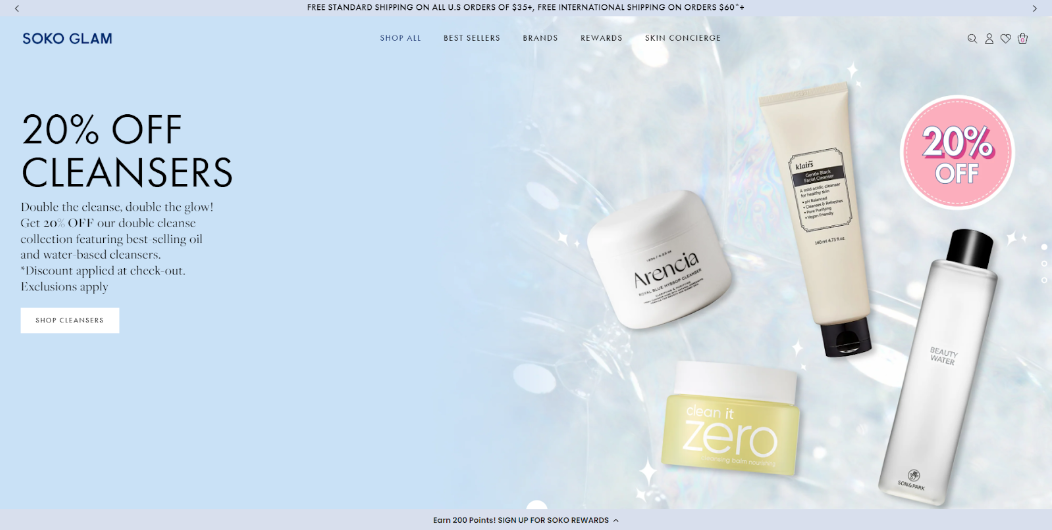
Soko Glam’s landing page achieves success through two primary tactics:
Compelling Call-to-Action (CTA) Buttons: As users scroll through the page, they encounter sections featuring banners with concise titles, product descriptions, and prominently placed CTA buttons. This design enhances conversion rates by simplifying the purchasing process and encouraging action from visitors.
Fresh Color Palette: Soko Glam employs a vibrant and refreshing color scheme that aligns seamlessly with its brand identity and mission of promoting clean and healthy skin. This thoughtful use of color not only enhances the visual appeal of the page but also reinforces Soko Glam’s commitment to quality skincare products.
2. Alo Yoga
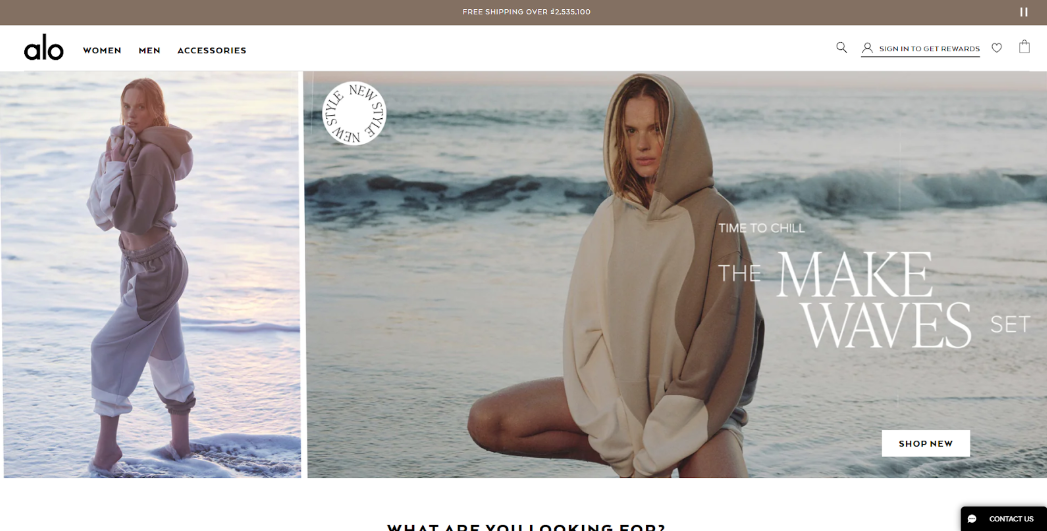
Alo Yoga’s landing page achieves success through two pivotal elements:
Dynamic video backgrounds: Alo Yoga’s landing page prominently features a captivating video banner, immersing visitors in the brand’s ethos. This dynamic visual presentation not only grabs attention but also conveys detailed information about Alo Yoga’s missions.
Compelling narrative: By skillfully weaving engaging copy throughout the page, Alo Yoga effectively piques visitors’ curiosity and enhances the brand’s credibility. This strategic approach not only sparks interest in Alo Yoga’s products but also converts casual browsers into potential customers, all without directly showcasing the items.
3. Cape Saltie
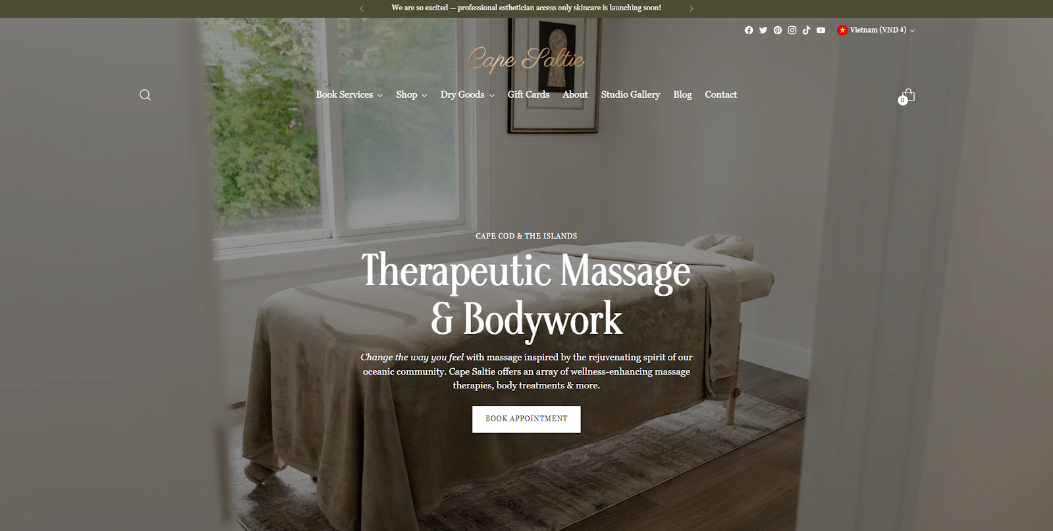
Cape Saltie’s landing page succeeds for two key reasons:
Dynamic visual presentation: Instead of relying solely on static images, Cape Saltie incorporates engaging video backgrounds to showcase its products and services. This dynamic approach captivates visitors and offers a more immersive experience.
Captivating messaging: Cape Saltie excels in crafting compelling website copy that strikes the right balance between clarity and charm. The language used is approachable, making it easy for today’s internet users to quickly grasp the brand’s offerings while skimming through the content.
In a Nutshell
In conclusion, above are all things that we would like to guide you on how to create a landing page from scratch. We hope that you will know how to design a landing page that not only captures attention but also drives engagement and conversions, ultimately growing your e-commerce business.
 Magezon Blog Help Merchants Build Comprehensive eCommerce Websites
Magezon Blog Help Merchants Build Comprehensive eCommerce Websites

